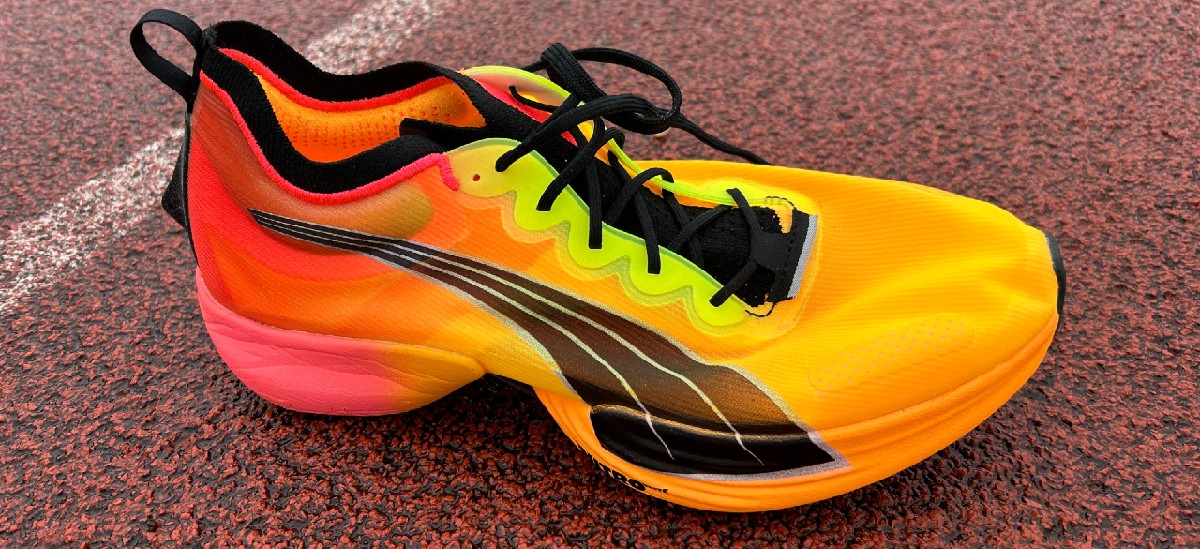Our Verdict
The Puma Fast-R Nitro Elite is a distinctive shoe with a fast and efficient ride, but at its price the carbon competition is too stiff, and Puma’s own Deviate Nitro Elite is a better-value option.
For
- Fast ride
- Stand-out design
- Excellent grip
Against
- Better options available for less
- A bit firm for long races
You can trust Coach
Since World Athletics has set limits on what brands can do with their carbon shoes, it is becoming harder for their latest releases to stand out from the crowd. Most of the best carbon plate running shoes now follow a similar design pattern – a near-40mm stack of bouncy foam combined with a carbon plate to deliver a propulsive, efficient ride.
Puma has aimed to create something different with the Fast-R Nitro Elite, which has a distinctive design thanks to the decoupled midsole. It’s an efficient racing shoe, but unfortunately in today’s market being efficient isn’t enough. There are better options available from both Puma and other brands, such as the Nike Vaporfly and Saucony Endorphin Pro 3.
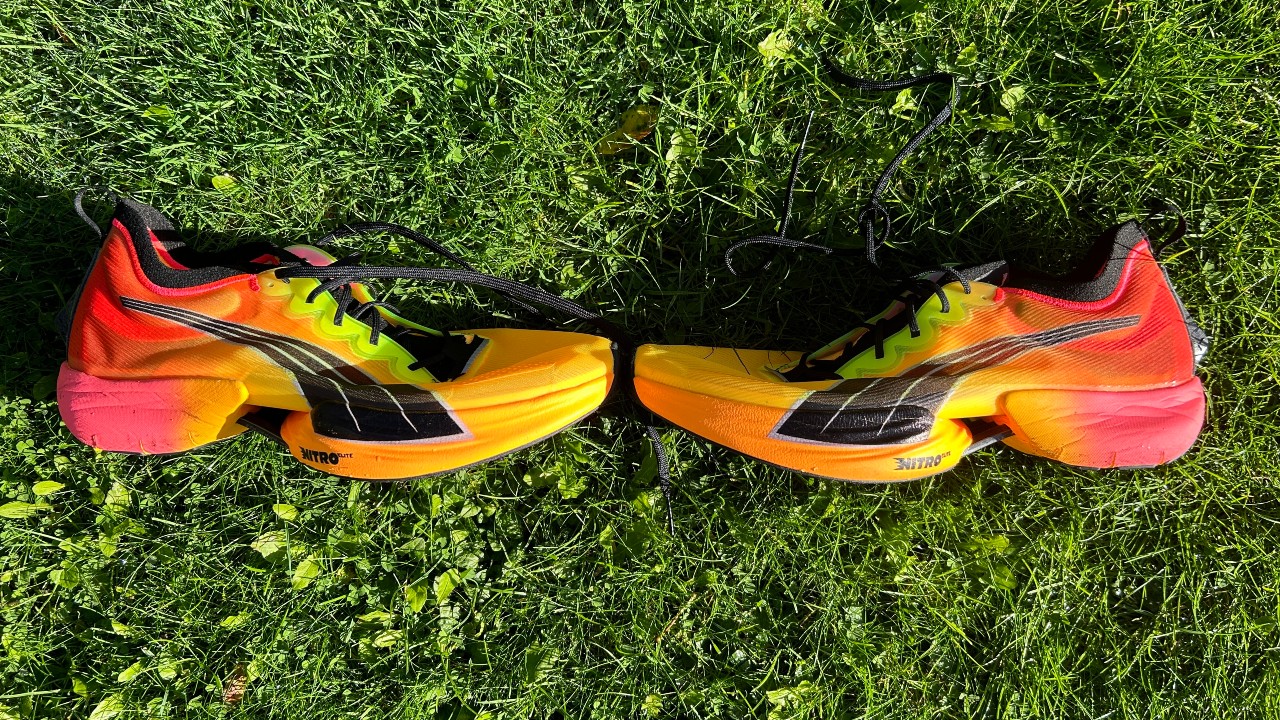
Puma Fast-R Nitro Elite Review: Price And Availability
The Fast-R Nitro Elite is available now and costs $250/£220, which is about par for the course for a carbon plate racing shoe, but a fair bit more expensive than Puma’s other carbon racer, the Deviate Nitro Elite, which is $200/£170.
Design
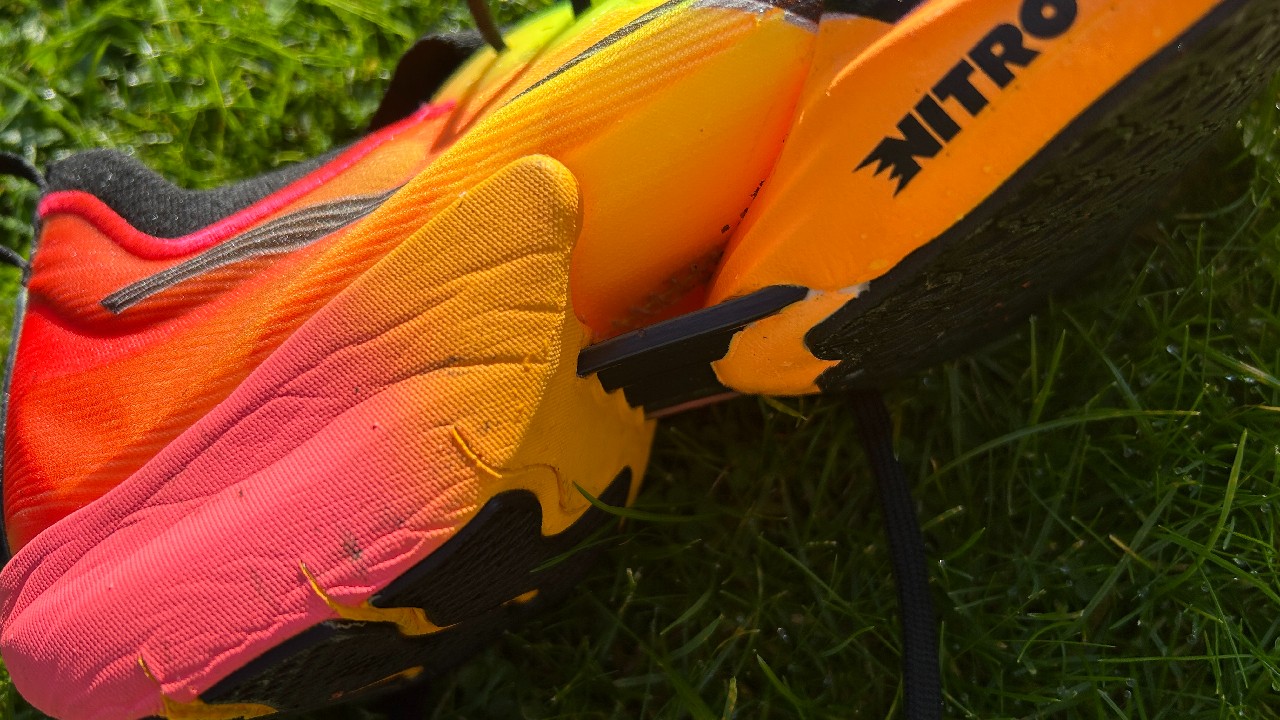
The decoupled midsole is the star of the show with the Fast-R. The carbon composite PWRPLATE in the shoe is completely exposed in the midfoot, and the chunks of midsole foam on either side are made from different materials and have a very different feel.
EVA foam is used at the back of the shoe to create a firmer feel, a stable landing and a fast transition to the forefoot of the shoe, which is made from a castor bean oil-based version of Puma’s nitrogen-infused Nitro Elite foam. The forefoot feel is soft and squishy, and wildly different to the firm feel at the heel of the shoe.
The mono-mesh upper has a stretchy gusseted tongue that creates a sock-like fit over the top of the foot. The shoe fits me well in my normal size, with no slippage around the heel. At the back of the shoe is a plastic fin, the purpose of which is hard to ascertain, although it certainly adds to the singular look of the Fast-R.
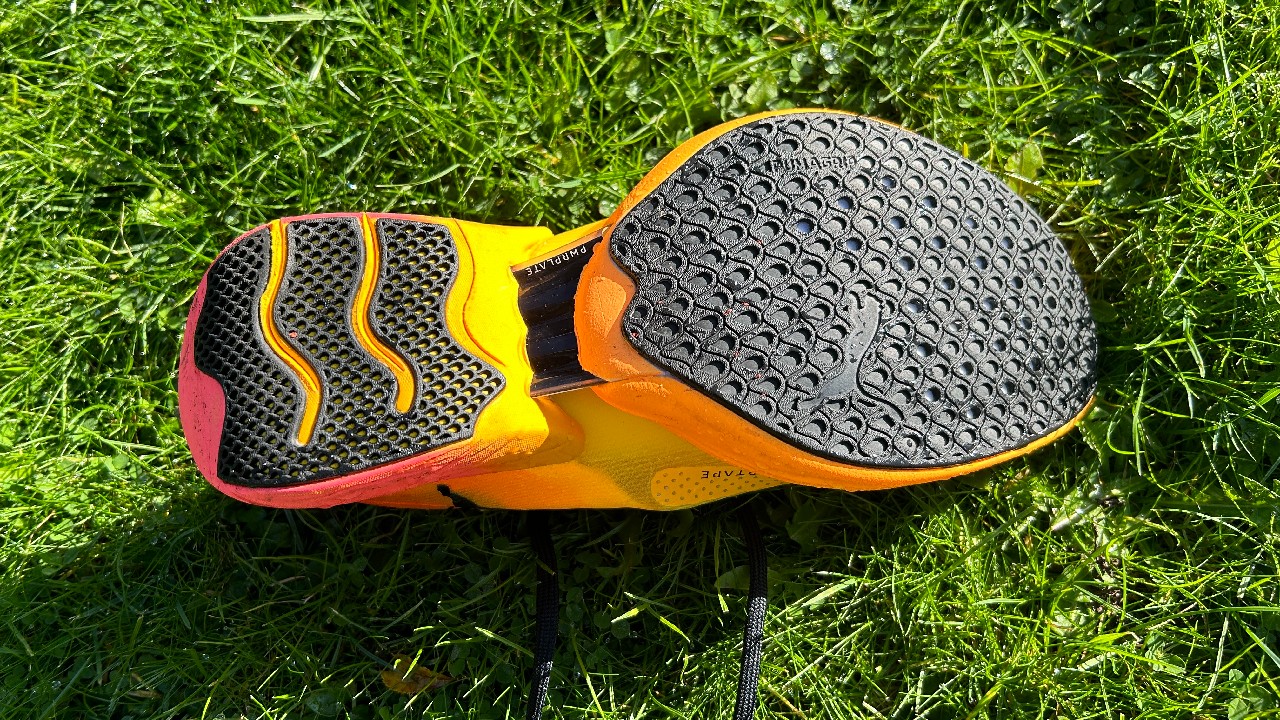
On the outsole of the shoe there is a generous layer of PUMAGRIP-LT rubber on both the heel and forefoot. This grips exceptionally well on slick roads and is among the best outsoles you’ll find on a carbon racing shoe.
Sign up for workout ideas, training advice, reviews of the latest gear and more.
The Fast-R has an 8mm drop from heel to toe and weighs 8.4oz/238g in my UK size 9, which is heavier than I expected, especially when compared with the Deviate Nitro Elite, which at 7.1oz/201g in a UK 9 is one of the lightest carbon shoes.
How I Tested This Shoe
I have used the Puma Fast-R Nitro Elite for a couple of speed sessions and raced a 1hr 11min half marathon in the shoe. I used it for a small amount of easy running too, and in one of my track sessions with the shoe I also used the Puma Deviate Nitro Elite to compare the two shoes.
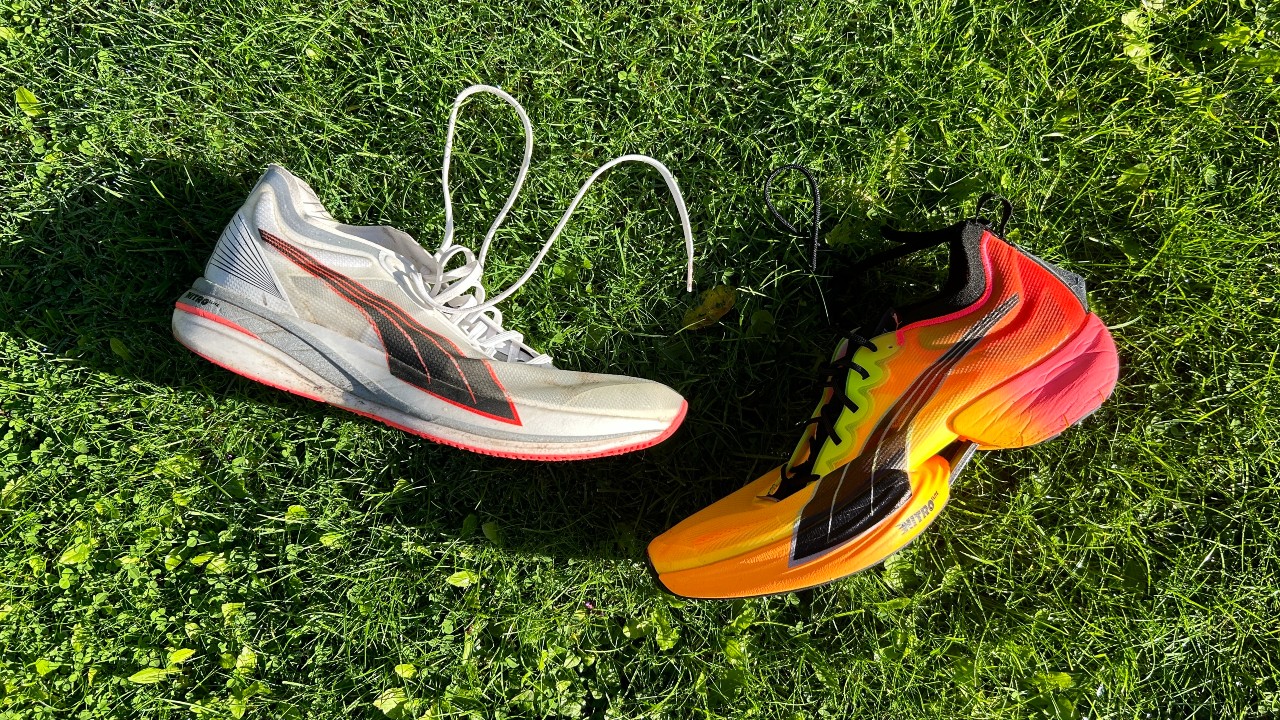
Running Performance
My first run in the Puma Fast-R Nitro Elite was the Pleshey Half Marathon in Essex. Well, actually my very first run was the warm up for that race, during which the shoe felt pretty bizarre until I stepped up the pace with some strides. This is not a versatile carbon shoe that’s enjoyable to use for easy and steady runs as well as speedy ones; only at fast paces does it click into gear and feel smooth.
Once I hit my straps the ride is undeniably efficient. As a heelstriker the firm chunk of foam at the back of the shoe feels a little odd compared to the squishy feel of most carbon racers, but it creates a lightning-fast transition to the forefoot of the shoe, where you sink into the soft Nitro Elite foam before powering off the forefoot aided by the spring of the plate.
During the half marathon I found that the Fast-R helped me to maintain a good pace, even over rolling hills and during the final section of the race when I started to tire. It does what you expect of a carbon shoe – it just feels a little different from most others because of the firmer heel.
I didn’t find it the most comfortable shoe during the half marathon, however, and would hesitate to use the Fast-R for a full marathon. Those who land on the softer forefoot might find it better for the long haul than heelstrikers, but I’d keep it for shorter races and sessions, whereas rivals like the Nike Vaporfly and Saucony Endorphin Pro 3 are great for races at any distance.
The Fast-R feels great on short reps, with a snappy ride, but even there I found that I preferred the Deviate Nitro Elite when doing a track session using both. I ran two one-mile reps in each shoe and the lighter Deviate Nitro Elite felt more natural underfoot. It has a full Nitro Elite midsole, which creates a softer landing at the heel, and I’ve found it a shoe that’s comfortable to use for a range of training runs as well as races.

Is The Puma Fast-R Nitro Elite Worth It?
While it’s not a bad racing shoe at all, the Fast-R isn’t quite up to the standard of the best carbon plate running shoes such as the Nike Vaporfly and Saucony Endorphin Pro 3, both of which are available for the same price or less.
I also prefer the Puma Deviate Nitro Elite, which is lighter and significantly cheaper, so if you’re looking for a carbon plate racer from Puma that’s the one I’d go for. If you do pick up the Fast-R you won’t be let down by its performance, but despite its innovative design it fails to be a stand-out option in the carbon plate shoe market.

Nick Harris-Fry is a journalist who has been covering health and fitness since 2015. Nick is an avid runner, covering 70-110km a week, which gives him ample opportunity to test a wide range of running shoes and running gear. He is also the chief tester for fitness trackers and running watches, treadmills and exercise bikes, and workout headphones.
